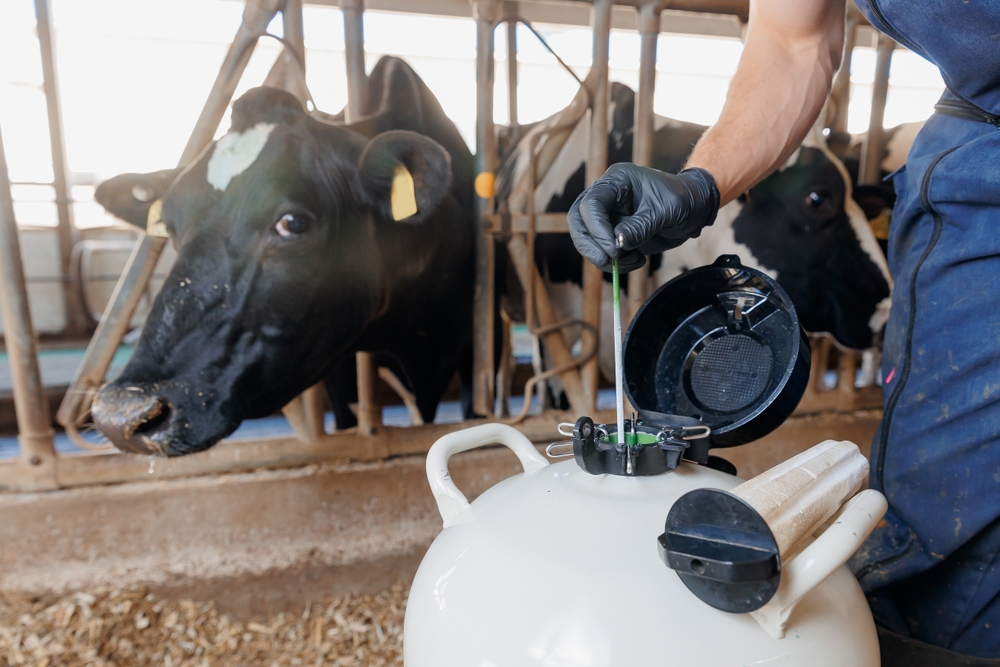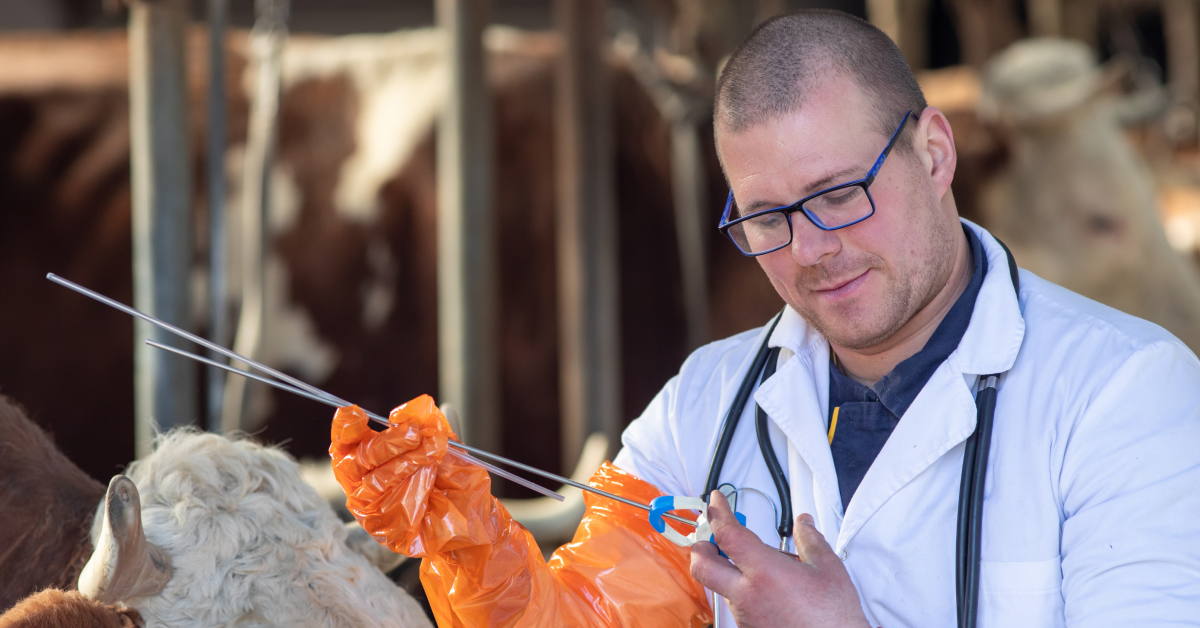The Ovum Pick-Up (OPU) technique is not just a method but a transformative tool in livestock breeding, particularly in cattle. It significantly enhances reproductive efficiency and genetic advancement, making it a pivotal player in modern animal breeding practices.
Importance of OPU in Modern Animal Breeding
OPU is instrumental in accelerating genetic progress, preserving endangered breeds, and optimizing livestock reproduction. It has revolutionized the livestock industry by enabling the production of high-quality embryos and improving overall herd genetics.
What is Ovum Pick-Up (OPU)
Ovum Pick-Up (OPU) is a technique for collecting egg cells from the ovaries of female livestock. These oocytes can then be fertilized in vitro to produce embryos, which can be either cryopreserved or transferred to recipient females.
Purpose and Benefits of OPU in Livestock Breeding
The primary purpose of OPU is to enhance reproductive efficiency and genetic diversity in livestock. It allows breeders to harvest multiple oocytes from valuable females, maximizing their genetic contribution and enabling the production of embryos for commercial or conservation purposes.
This results in significant benefits for livestock breeding, including accelerated genetic progress and the preservation of endangered breeds.
The Ovum Pick-Up Process
The Ovum Pick-Up (OPU) process is a sophisticated and delicate procedure central to modern livestock breeding techniques. It involves the precise extraction of oocytes, or egg cells, from the ovaries of donor animals, which can then be fertilized and developed into embryos.
This process maximizes the genetic potential of valuable females and enables breeders to optimize reproductive outcomes and accelerate genetic improvement within a herd. Here’s how the Ovum process works:
Donor Animal Selection
Selecting suitable donor animals is crucial for the success of OPU. Donor females are chosen based on their genetic merit, health, age, and reproductive history. These animals typically possess desirable traits that breeders wish to propagate.
Preparing the Donor
Before the OPU procedure, donor animals undergo hormonal treatment to stimulate the development of multiple follicles on their ovaries. This process, known as superovulation, increases the number of oocytes available for collection.
Aspiration Process
The OPU procedure begins with the donor animal being anesthetized. An ultrasound probe is inserted into the rectum to visualize the ovaries. A needle is then guided through the vaginal wall into the follicles, where the oocytes are gently aspirated.
Collection and Evaluation of Oocytes
The aspirated fluid, containing the oocytes, is collected in a sterile tube and examined under a microscope. Only viable oocytes are selected for further processing, ensuring the best chances for successful fertilization and embryo development.
In Vitro Maturation (IVM)
The selected oocytes undergo in vitro maturation (IVM) in a specialized medium. This step is crucial as it prepares the oocytes for fertilization, enhancing their developmental potential.
In Vitro Fertilization (IVF)
The next step is in vitro fertilization (IVF), where the matured oocytes are fertilized with sperm outside the animal’s body. This process is integral to OPU and allows for controlled breeding and genetic manipulation.
Embryo Development
Following fertilization, the embryos are cultured until they reach a specific developmental stage, typically the blastocyst stage, which occurs around seven days after fertilization.
Cryopreservation or Embryo Transfer
The developed embryos can either be cryopreserved for future use or transferred immediately to recipient females. Cryopreservation offers flexibility in timing, making it a valuable tool for managing breeding programs.
Applications of OPU in Livestock Management

Here’s how the application of OPU in Livestock management works:
Accelerating Genetic Progress
OPU is not just a tool but a catalyst for rapid genetic improvement. It enables the multiplication of DNA from superior females, accelerating genetic progress within a herd and paving the way for a brighter future in livestock breeding.
Protection of Endangered Breeds
The technique is vital and a lifeline for conserving endangered breeds. It allows for preserving and propagating valuable genetic traits in these populations, instilling a sense of responsibility and commitment to conservation in the audience.
Optimized and Efficient Reproduction
OPU is particularly beneficial for animals with reproductive challenges, allowing the extraction of oocytes from females who may have difficulty conceiving naturally.
Embryo Production for Financial Gain
The commercial production of embryos through OPU and IVF has become profitable, with breeders supplying high-quality embryos to meet market demands.
Exams and Genetic Studies
OPU is a valuable tool for research and genetic studies, enabling scientists to explore specific traits, gene functions, and reproductive biology in detail.
Advantages of the OPU Method
The advantages of the OPU method are as follows:
Increased Genetic Profit
By allowing multiple oocyte harvests from valuable females, OPU maximizes genetic profit, making it a highly effective breeding tool.
Extended Reproductive Lifespan
OPU extends the reproductive lifespan of females by enabling the extraction of oocytes even after their natural reproductive capabilities have declined.
More Adaptability in Reproductive Initiatives
The ability to cryopreserve embryos gives breeders greater flexibility, allowing them to manage breeding programs effectively.
Challenges and Impediments of OPU
While the Ovum Pick-Up (OPU) technique offers significant advantages in livestock breeding, it also presents several challenges and impediments that must be carefully considered. The complexity of the procedure demands a high level of expertise and access to specialized equipment, which can limit its accessibility for many breeders.
Additionally, concerns about the welfare of donor animals and the significant costs associated with OPU raise essential ethical and financial considerations. Below are the challenges for evaluating the feasibility and sustainability of OPU as a tool in modern animal breeding programs.
Need for Expert Technicians
The complexity of the OPU process requires skilled technicians and specialized equipment, which can be a barrier for some breeding operations.
The welfare of Donor Animals
Concerns about the welfare of donor animals are paramount. Proper handling, sedation, and aftercare are essential to ensure the well-being of these animals.
Cost Considerations
The costs associated with OPU, including hormonal treatments, the procedure itself, and subsequent laboratory processes, can be significant, making it less accessible for smaller farms.
Future Perspectives of OPU in Livestock Breeding
The future of Ovum Pick-Up (OPU) in livestock breeding is poised for exciting advancements and broader adoption across the industry, such as:
Potential Advancements and Innovations in OPU
As technology advances, OPU is expected to become more efficient, with improved success rates and reduced costs. Innovations in reproductive technologies will likely enhance the technique’s applicability across different livestock species.
Role of OPU in Global Livestock Production
OPU will continue to play a crucial role in global livestock production, offering new possibilities for genetic improvement, conservation, and sustainable breeding practices.
Conclusion
Ovum Pick-Up (OPU) is a transformative technique in livestock breeding, offering numerous benefits in genetic advancement, reproductive efficiency, and conservation. Despite its challenges, OPU is poised to remain a cornerstone of modern animal breeding, providing immense potential for the future of global livestock production.




